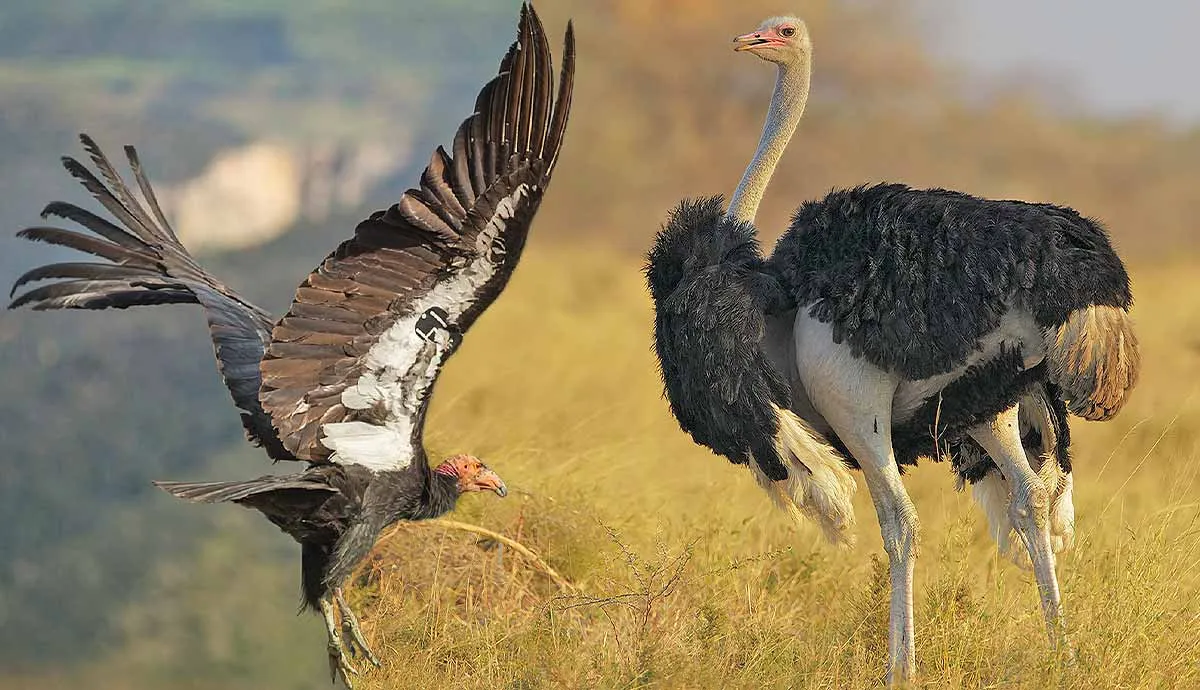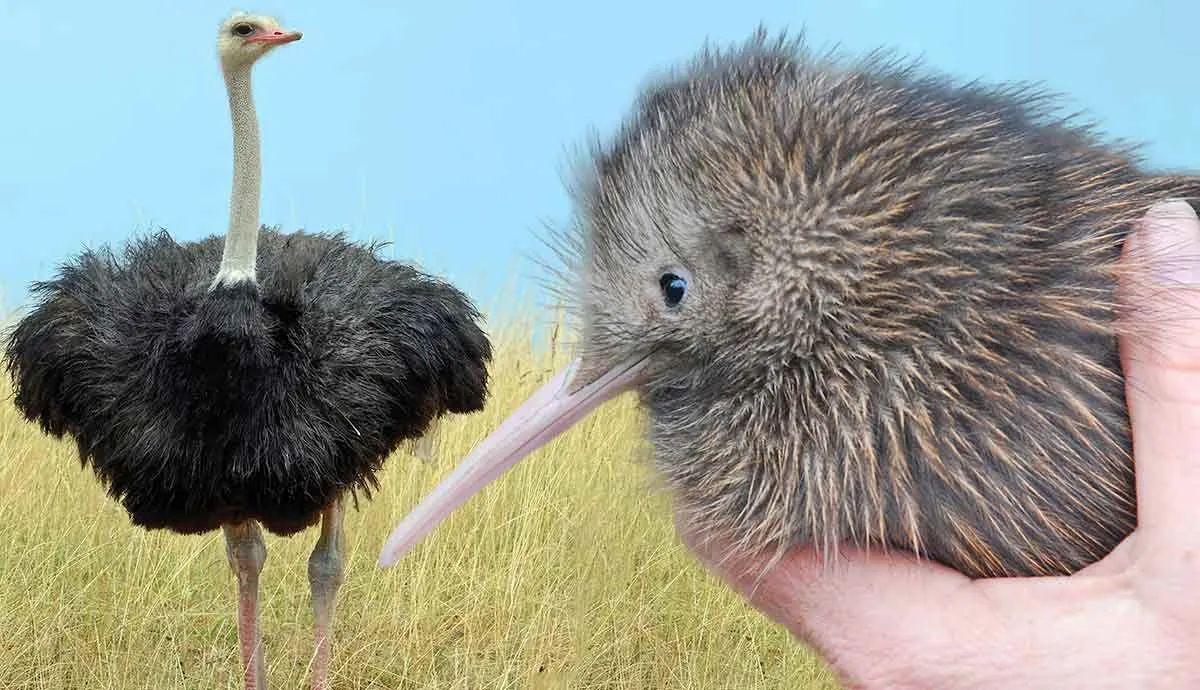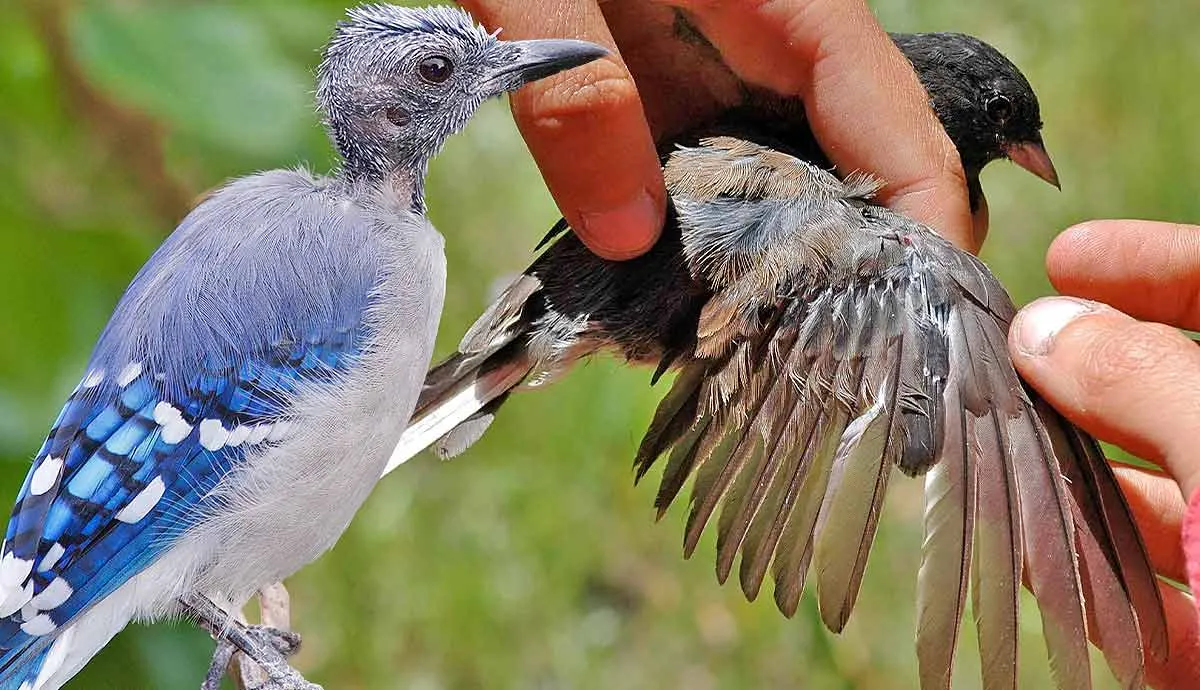Most of the birds we see on a regular basis could fit in our hand, but emus and ostriches are in a league of their own. As ratites, emus and ostriches share a few traits. They have flat breast bones ill-suited for flight and a smaller brain-to-body ratio than other birds.
Ostriches and emus share ancestors who lived on the supercontinent Gondwana during the late Cretaceous period. As the land broke apart, these birds had new environments to adapt to. Because they evolved in different areas, emus and ostriches have different physical and behavioral characteristics that go beyond their first-glance similarities.
Size
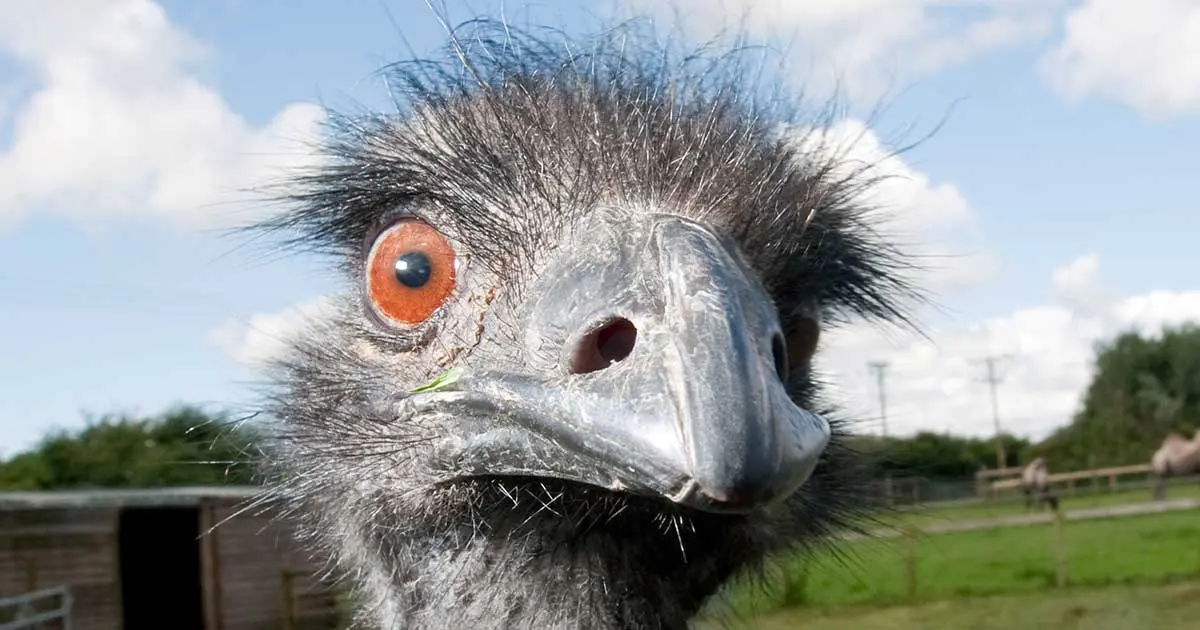
While both top the list of the World’s Biggest Birds, ostriches stand a good foot or two taller than emus. The average ostrich stands anywhere from 5.5 to 9.4 feet tall (1.7 to 2.8 meters). Their neck and head make up about half of this height.
Female ostriches are often, but not always, slightly shorter than the males. The smallest ostriches weigh about 139 pounds (63 kg), while the largest of the birds weigh as much as 320 pounds (145 kg).
As the second largest bird and the largest in Australia, Emus stand about 2 feet shorter than their cousins. Most stand about 5 to 6.5 feet tall (1.5 to 2 meters) and weigh about 99 pounds (45 kg), regardless of gender.
While neither bird flies, ostriches have a 6-foot wingspan that makes sense relative to their size. These vestigial wings are much smaller on emus.
Appearance
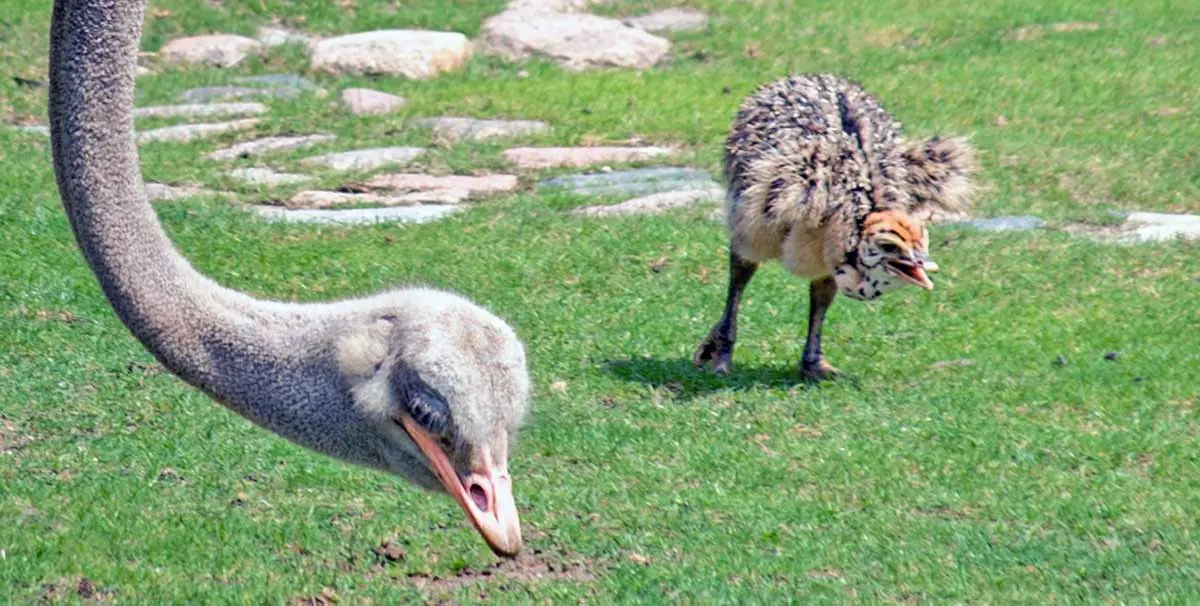
When standing right next to each other, it’s easy to tell the difference between emus and ostriches.
Emus have a shaggier look, with long, fluffy brown feathers. Short, dark downy feathers cover their heads and necks. Babies have striped plumage to keep them hidden until they’re much larger.
Male and female emus look the same overall, with females sometimes slightly larger than males. The pale blue skin on their neck and heads darkens during mating season, but the skin on the face, neck, and feet are dark otherwise.
Ostriches have a lighter appearance overall. The short white downy feathers do little to darken their pale skinned necks, and their legs remain bare. Unlike most birds, ostriches only have two toes. Evidence shows that this allows them to maintain high speeds on loose sand.
Male ostriches usually have black plumage with white tips on the wings, while females are brown overall. Ostrich chicks have thin spiky feathers that resemble the brush of the desert. Their striped necks and speckled bodies work well to keep them hidden.
Breeding Behavior

Emus are socially monogamous. They settle down in late summer or early autumn to make their nests. The female lays anywhere from 5 to 15 eggs before leaving the male to resume incubation responsibilities for the next 8 weeks. A male emu usually survives off his stored fats while watching over the large dark green eggs.
Ostriches have a more expressive approach to breeding. Their flamboyant rituals run from late summer to early fall, and a male usually mates with 3 to 5 hens each season. They will share incubation responsibilities until the eggs hatch in about 6 weeks.
The cream-colored ostrich eggs are the largest of any bird in the world, weighing an average of 3 pounds.
Geographic Location
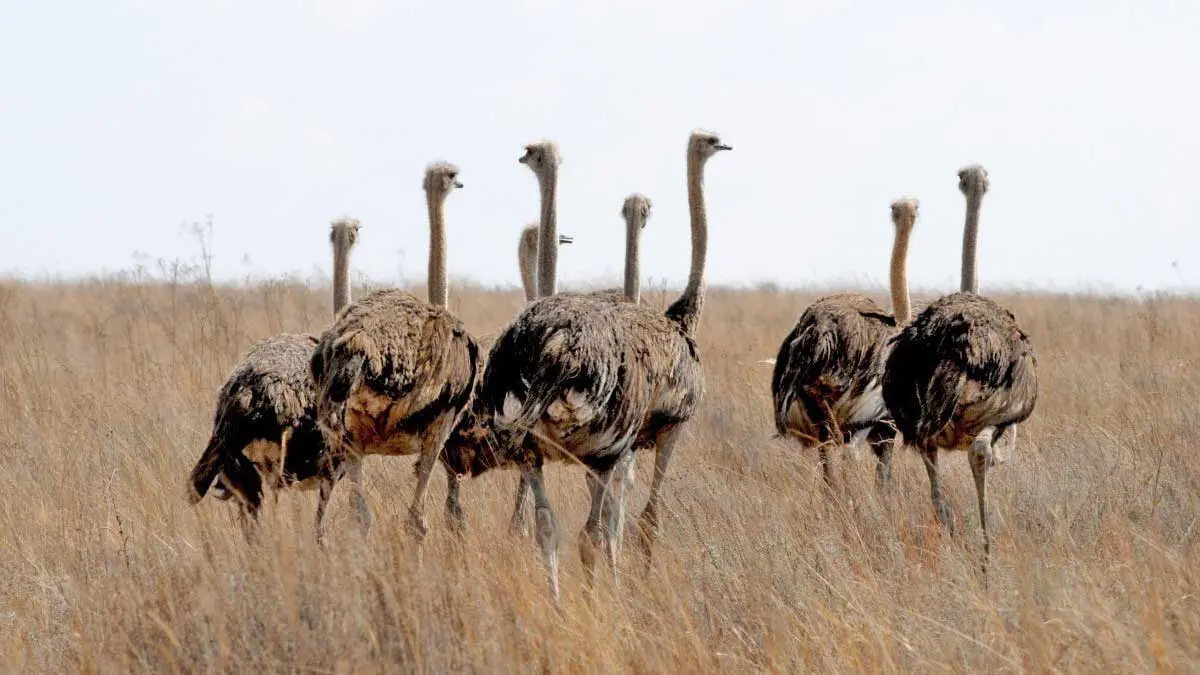
Location is the main influence behind the diverging evolution of emus and ostriches.
Ostriches are native to Africa, although some of their ancestors were seen along the Arabian Peninsula and in Mongolia. They prefer open, arid spaces, the African Savannah and Sahel regions, but seek shelter in scrub or grasslands often.
Staying hydrated in the desert isn’t an issue for ostriches, but emus prefer more temperate or tropical climates. They’re only found in the wild in Australia now, but once lived across east Tasmania as well.
Like ostriches, emus prefer open spaces where they can run freely.
Diet
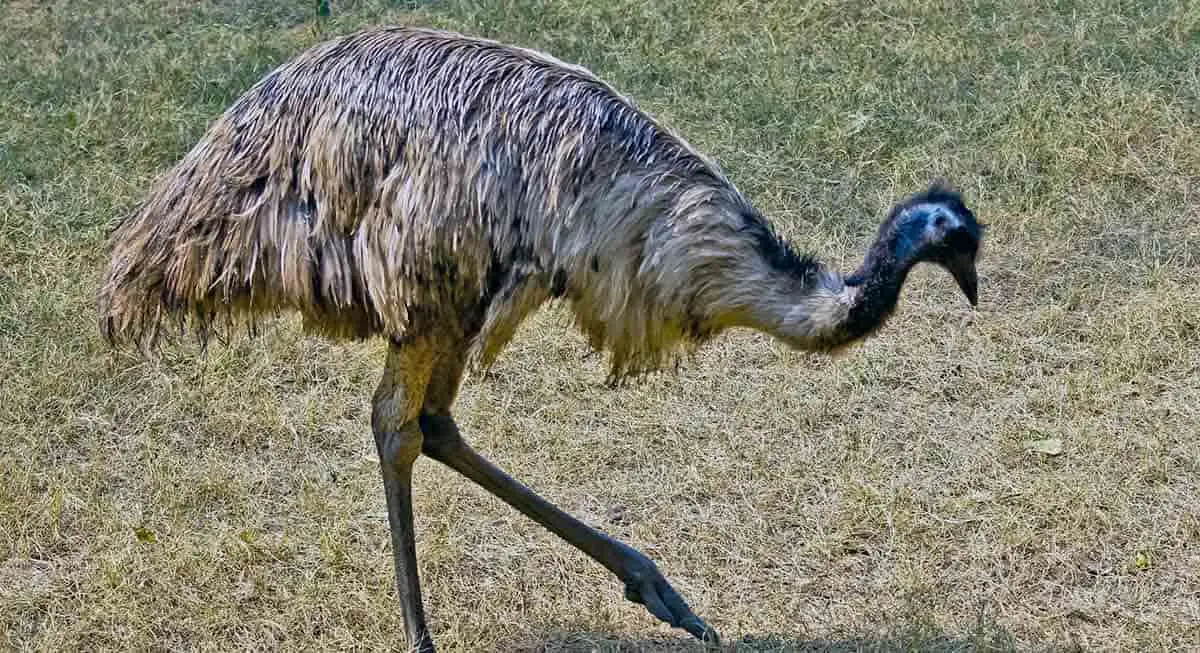
Both emus and ostriches are omnivores, but their location has a major impact on their diet.
Emus focus on greenery so much that they’re often considered herbivores. Most days, an emu will eat whatever plants are available, including flowers, grasses, fruit, and seeds. Occasionally, they chow down on insects like crickets or grasshoppers.
The arid environment that ostriches live in leaves them with fewer plants. The large birds must round out their diet with insects as well as reptiles and amphibians to ensure they have enough energy to survive.
Like most birds, emus and ostriches must eat small rocks to help them digest all sorts of matter. These rocks break down the food so it can pass through the small intestine with ease.
Farming Purposes
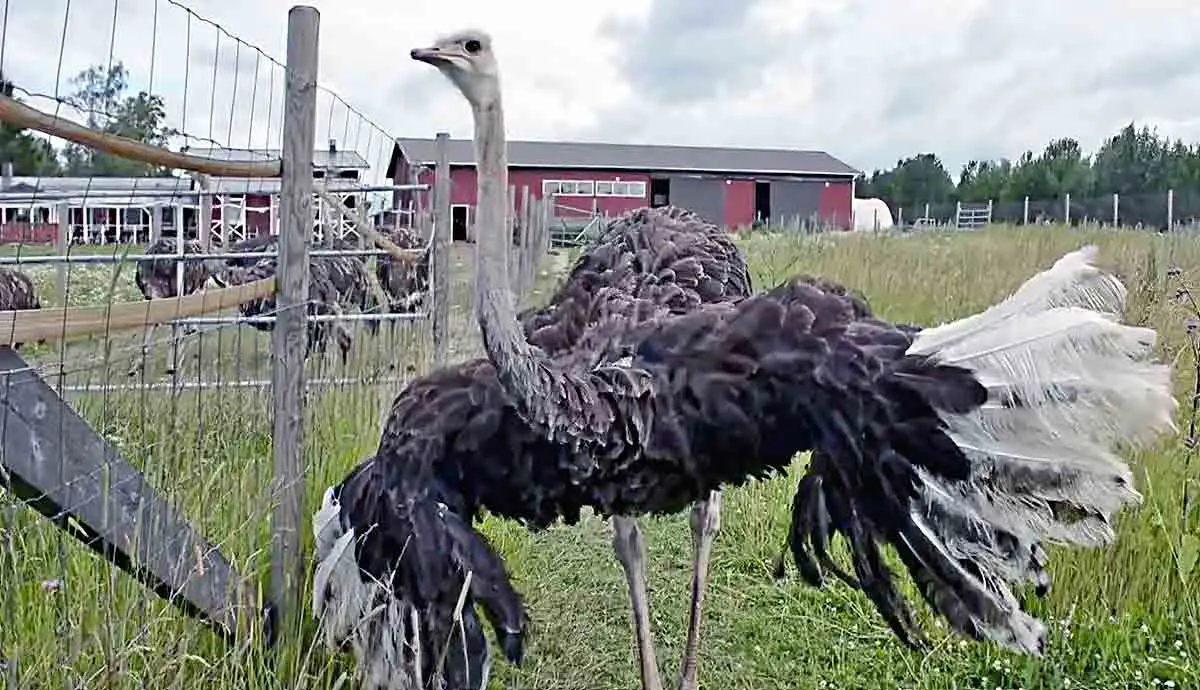
Emus and ostriches populate farms across the globe. While many are there to liven up the scenery, they also serve more practical purposes.
Aborigines in Australia farm emus primarily for meat, but their fat works well for certain skin conditions and as a lubricant for wooden tools and utensils. Emu oil and leather are major byproducts of their farming.
Ostriches have also been farmed for meat and leather, but most people seek them out for their feathers. These were a major feature in historical French fashion and show up often in modern decor.
Ostrich eggs are often sold for hatching, and, less often, eating. They’re about equal to 12 chicken eggs, so cooking one is usually more hassle than it’s worth.
Recent studies show promise in using an ostrich cornea as a scaffold for cornea reconstruction in humans.


